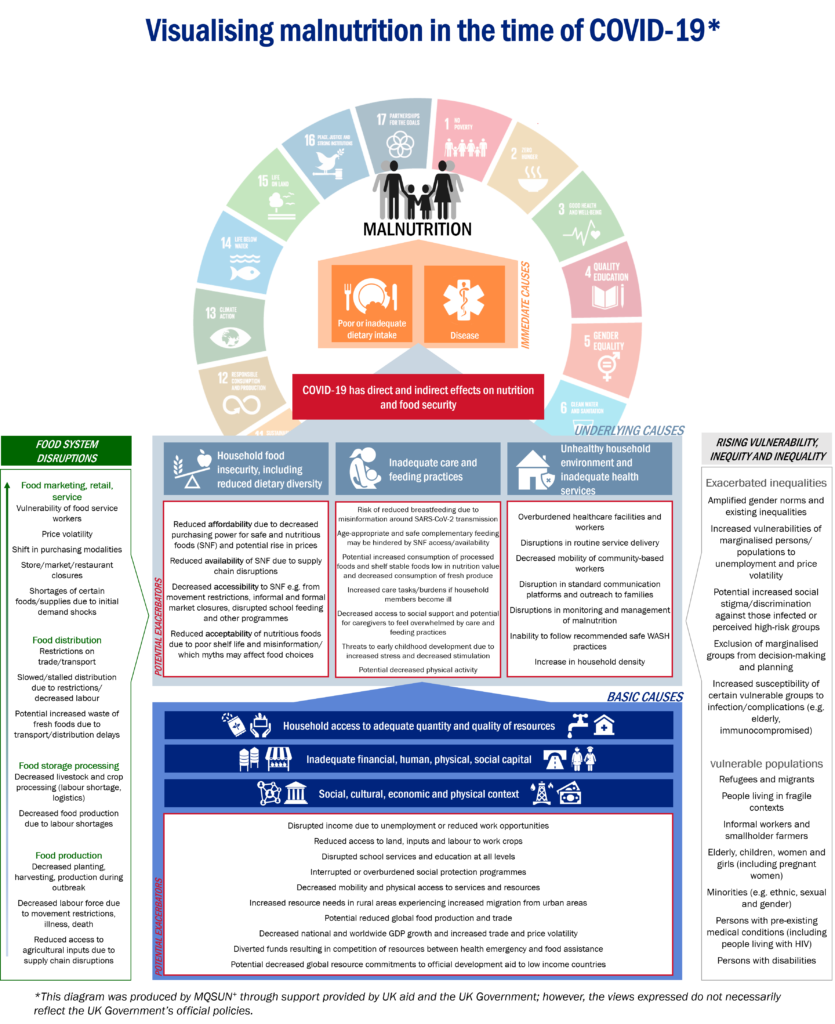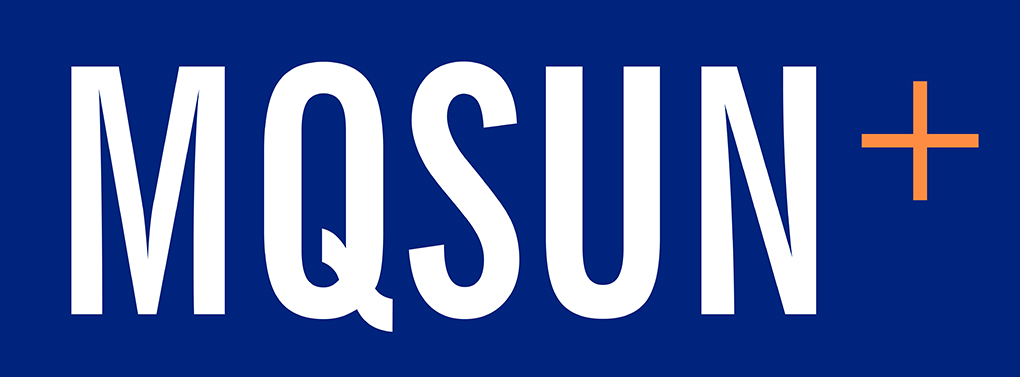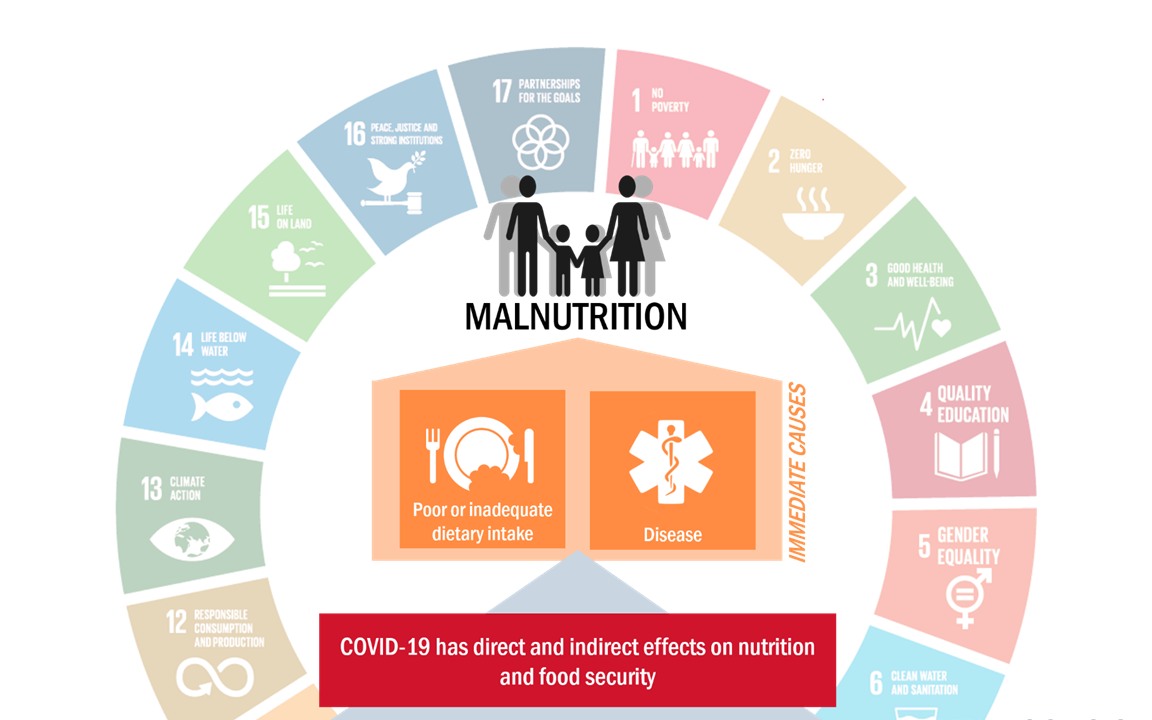The current COVID-19 pandemic is unprecedented in its reach—affecting countries across the globe in just a few short months. The necessary measures to curb the spread have caused disruptions to individuals, societies and economies worldwide and have the potential to influence food security and nutritional status. United Nations agencies are sounding the alarm on a sharp rise in hunger [1]. We know that good nutrition is vital for a strong immune system, and those with weak immune systems are more susceptible to COVID-19 infection and complications [2,3]. The current pandemic is expected to further exacerbate the drivers of malnutrition, particularly among vulnerable populations [4].
Drawing on the UNICEF Framework, we have developed a diagram to visualise the potential exacerbating impact of the COVID-19 pandemic on malnutrition. This is not meant to be viewed as a causal model but rather to serve as an evolving framework to visualise the multi-level influences on the nutrition pathways. The focus of the diagram is on the basic and underlying causes of malnutrition that are likely exacerbated during the current COVID-19 pandemic. The food system disruptions, represented along the left side of the diagram, directly and indirectly influence accessibility, affordability, availability and acceptability of nutritious food. Rising vulnerabilities, inequities and inequalities, represented along the right side of the diagram, further highlight the intensified and expanded vulnerability of certain population groups.
The multifaceted and interconnected potential and known risk factors—noted throughout this diagram— call for a multisectoral, multi-stakeholder and coordinated global approach across communities, countries and regions. New evidence, guidance and resources are emerging daily to inform immediate response measures and efforts to mitigate the pandemic’s secondary impacts along these pathways. We hope this visual may help to spur dialogue and raise awareness around nutrition as a key pillar in the COVID-19 response and recovery efforts, and the critical need to address these immediate and secondary impacts.

CONSULTED RESOURCES: FAO | COVID-19 and the risks to food supply chains: How to respond; WHO | Operational guidance for maintaining essential health services during an outbreak; WFP | potential impact on world’s poorest; UNSCN | food environments; UNICEF, GNC, GTAM | IYCF in the context of COVID-19; UNSCN | Food environment in the COVID-19 pandemic; CDC | combatting stigma; IASC | Include marginalised and vulnerable people; IASC | Interim guidance for gender in COVID-19; UNICEF | consideration for children and adults with disabilities; JMP | WASH data; UN | COVID-19 impact on children
This blog and diagram were produced by Amanda Coile and Arja Huestis, MQSUN+, to visualise the complexity of combating malnutrition in the era of COVID-19 and to inform the work of MQSUN+ and the broader nutrition community. If you have any comments or suggestions on the diagram, please contact MQSUN+@path.org.
[1] WFP. WFP Chief warns of hunger pandemic as COVID-19 spreads. 21 April 2020. Accessed from: https://www.wfp.org/news/wfp-chief-warns-hunger-pandemic-covid-19-spreads-statement-un-security-council
[2] Katona P, Katona-Apte J. The Interaction between Nutrition and Infection. Clinical Infectious Diseases. 46;10. 2008. 1582-88.
[3] Committee on Global Food Security. Interim Issues Paper on the Impact of COVID-19 on Food Security and Nutrition (FSN) by the High-Level Panel of Experts on Food Security and nutrition (HLPE). 2020.
[4] Committee on Global Food Security. Interim Issues Paper on the Impact of COVID-19 on Food Security and Nutrition (FSN) by the High-Level Panel of Experts on Food Security and nutrition (HLPE). 2020.





